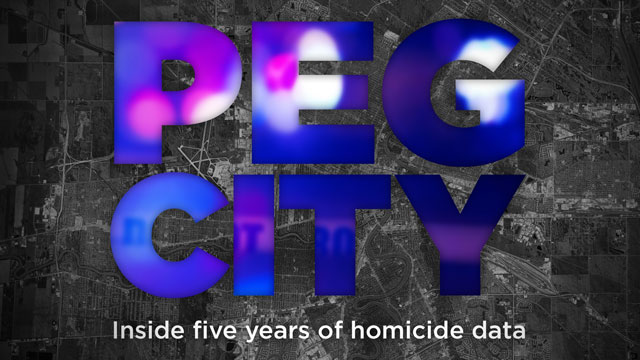
Indigenous people account for almost half of the homicide victims in the city of Winnipeg.
Of the 119 homicides in the city over the last five years, 47.1 per cent are Indigenous men and women.
Kathleen Bremner, mother of Jordan Thomas,18, who was fatally stabbed in December 2017 in the North End, said the findings should come as no surprise.
“Living in this area it’s dangerous. I have three boys, or had three boys [and] trying to get them to walk around here safely is just almost impossible,” she said.
“You’re constantly running into kids walking around with some kind of weapon or trying to start some kind of fight, especially if you’re a young man.”
APTN News analyzed Winnipeg Police Service homicide data, obtained through a Freedom of Information and Protection of Privacy Act (FIPPA) request, for the years of 2014-2018.
Indigenous people dying in their 20s
The numbers show it’s almost twice as dangerous to be an Indigenous male.
Indigenous men and boys account for 30 per cent of the city’s 119 homicide victims, ranging in age from one to 56 years old. In a significantly large number of these deaths, the victim are in their 20s.
Homicides by gender
The number of homicides for Indigenous and non-Indigenous victims by gender.
Click here if chart does not display.
Indigenous women and girls represent 17 per cent of the total number of homicides over the same five-year period.
More Indigenous women are dying by homicide than non-Indigenous women, and they’re dying quite young, ranging from 15 to 66 years old. Again, many of these homicides involve victims in their 20s.

Christine Wood was only 21-years-old when she went missing in August 2016. Ten months later Wood’s body was found near a farmer’s field outside of the city. Source: APTN
Read: Winnipeg man who killed woman, dumped body won’t get parole chance for 15 years
“Every time an Indigenous person dies, people shrug their shoulders,” said Niigaan Sinclair, a professor in the Department of Native Studies at the University of Manitoba.
“When you get to a public consciousness where murder has become a normalized part of the impression of a people, then obviously nothing is done about it.”

Niigaan Sinclair said Peg City: inside five years of homicide data, sheds light on the disproportionate violence Indigenous men and women are experiencing.Source: Niigaan Sinclair
APTN asked for the number of homicides broken down by race, age, method and gender.
But Danica Bourgeois, acting FIPPA coordinator with the WPS, told us “the race of the victim is not tracked.”
APTN was able to arrive at the numbers we’re using in this story by checking obituaries, news reports and a well-known blog called, “Winnipeg Homicide Statistics and Stories.”
We also reached out to several family members of the victims.
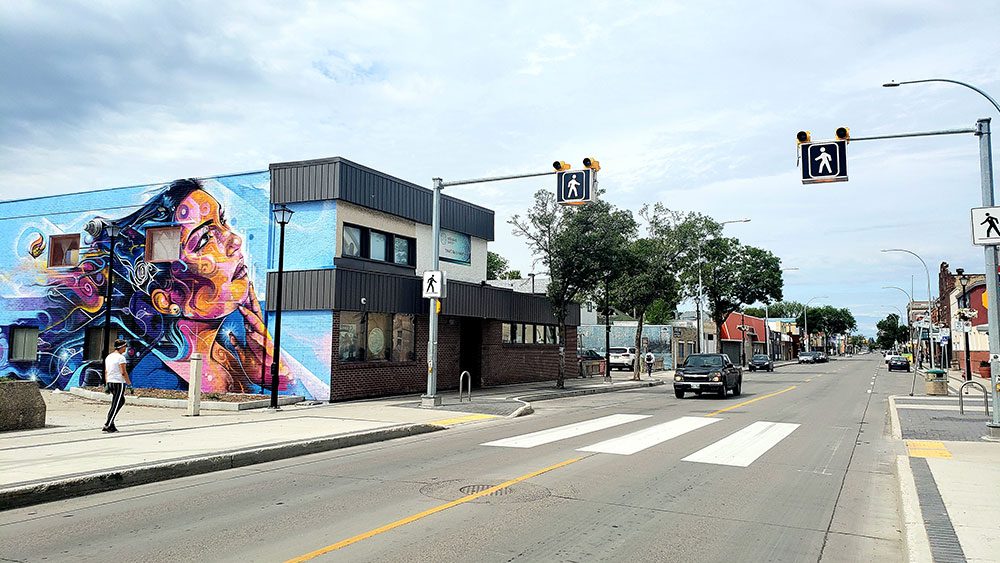
A bulk of homicides involving Indigenous people are taking place in the north and central districts of the city. Source: Martha Troian
Based on the latest census, Winnipeg’s population is 761,540 with 92,810 residents identifying as either First Nation, Metis or Inuit.
According to the latest homicide numbers from Statistics Canada, the national homicide rate in 2018 was 1.76 victims per 100,000. The number of homicides in the census for the metropolitan area of Winnipeg was 2.69 per 100,000 population.
For Indigenous people, the number of homicides was sitting at 7.31 per 100,000 in 2018 for all of Canada, according to Statistics Canada. Indigenous people represent only 4.9 per cent of Canada’s total population.
At the time of publication, APTN could not verify several victims as Indigenous but we believe the number of Indigenous victims is higher.
For close to 15 years, ‘David,’ the creator of the Winnipeg homicide site has been actively archiving homicides stretching as far back as 1875. He only wants to be identified by his first name.
“I started a long time ago, my motivations were not political,” says David, who said he started the site because he was looking for more information about a homicide.
Watch Brittany Hobson’s story here:
Stabbings and assaults common method
A majority of homicides of Indigenous people in Winnipeg have to do with stabbings and assaults. Stabbings are higher amongst Indigenous people than non-Indigenous people in the city.
Homicides by method
The number of homicides for Indigenous and non-Indigenous victims by method.
Click here if chart does not display.
For Bremner she knows this all too well after losing her son to close to two years ago due to a random act.

Kathleen Bremner, mother of Jordan Thomas holding up a framed photo of her son. Thomas was set to graduate from St. John’s High School where he played on the school’s football team. Source: Martha Troian
“He was on his way home and just ran into some kids,” said Bremner.
“He was such a happy go lucky kid, he loved joking around, teasing his family [and] his brothers were his everything.”
Read: Winnipeg teen killed in fatal stabbing, brother in critical condition: police
Based on news reports many of these deaths stem from early morning assaults, altercations or from domestic violence.
In their annual crime statistics released this summer, the WPS revealed a rise in violent crime and cite an overwhelming problem dealing with people who are suffering from addictions.
Read: Police stats showcase the impact of Winnipeg’s meth problem
Shootings are ranked third when it comes to how Indigenous people are dying, but are higher for non-Indigenous and for people whose backgrounds are unknown.

Frank Cormier, Head of the Sociology and Criminology Department at the University of Manitoba says too often Indigenous people’s basic needs are left unmet by society. Source: Brittany Hobson
“Homicides involving firearms tend to be more organized than those involving a beating or a stabbing,” said Frank Cormier, department head for the Faculty of Arts in Sociology and Criminology at the University of Manitoba.
“Often there can be a fairly clear motive,” referring to rival gangs or the drug trade.
Cormier points out that the number of homicides this current year is concerning. Since August, there have been 26 homicides.
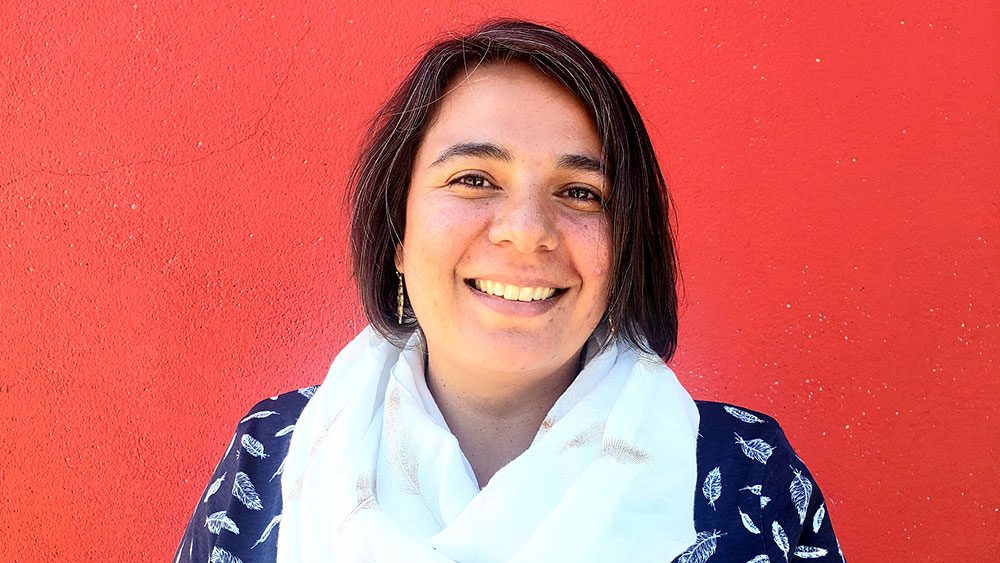
Angie Hutchinson, a violence prevention worker at Ma Mawi Wi Chi Itata Centre in the North End focuses her work around empowering young Indigenous youth. Source: Martha Troian
Angie Hutchinson, a family violence prevention worker at Ma Mawi Wi Chi Itata Centre in the north end asserts change can only happen when Indigenous people are the nucleus of their own healing.
“[We] look at centering Indigenous knowledges and Indigenous ways of being within all aspects of programming,” said Bremner.
“We look at supporting young individuals to find themselves and to find their place within their community, and foster their strengths and gifts and really provide them with the best opportunity to thrive within our communities.”
Read: Manitoba CFS organizations receive millions for studies, programs
Homicides taking place in north and central districts
As for location, based on the Winnipeg Police Service districts; central, north, west and east; most homicides involving Indigenous people between 2014-2018 are taking place in the central and north district.
The central district holds the highest number of homicides to do with Indigenous people accounting for 27 deaths, followed by 22 deaths in the north district.
Homicides in the west and east districts are higher amongst the non-Indigenous community in the city than Indigenous victims.
Homicides by district
The number of homicides for Indigenous and non-Indigenous victims based on the Winnipeg Police Services’ districts.
Click here if chart does not display.
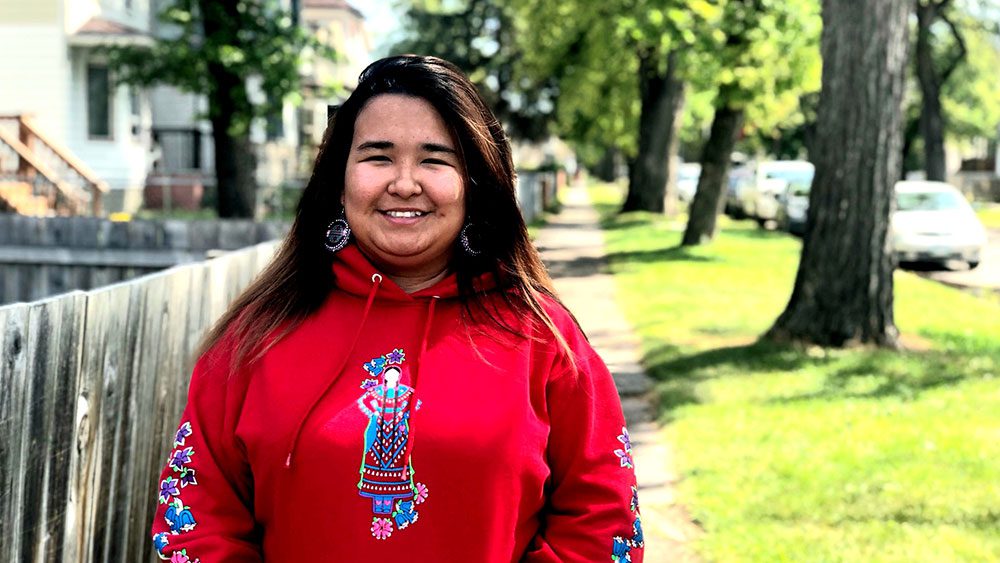
Tempest Bruce, a young Indigenous woman living in Winnipeg shares with APTN News how she lost a cousin two years ago from homicide. Source: Tempest Bruce
Tempest Bruce, a young Indigenous woman living in the north end of the city said living in the city can feel unsettling at times.
“I don’t feel safe walking to my car from my house sometimes,” said Bruce. “I get my mom to watch me.”
“I don’t feel safe being home alone, if I have to be home alone I just won’t be here.”
When out with friends, Bruce says they tend to stick together.
Four Indigenous homicides not listed in FIPPA documents
Four homicides involving Indigenous people were not listed in the FIPPA documents.
One of those cases being Mary Madelaine Yellowback, 33, who was found in recycling depot in September 2018.
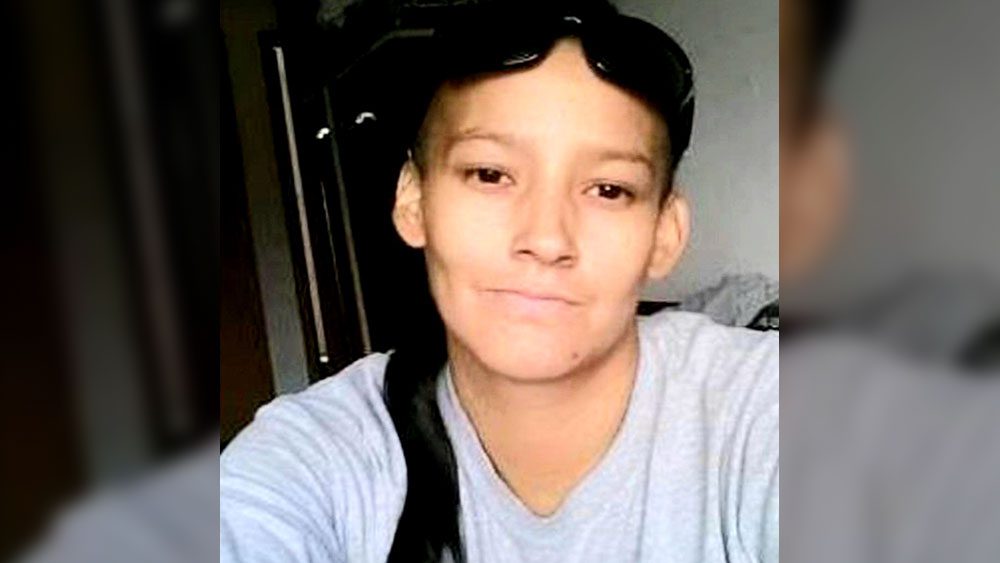
Mary Yellowback was a mother to several children when her body was discovered on September 28, 2018. Yellowback came from God’s River. Man. Source: APTN
Officers are treating Yellowback’s death as suspicious until her cause of death has been determined.
Read: Winnipeg Police identify mother of six found in recycling as Mary Madelaine Yellowback
Michele Trudel, FIPPA coordinator with the WPS wrote in an email that if someone’s death was deemed suspicious it would not be included in homicide data.
Homicide data is based on the Homicide Survey conducted by Statistics Canada. The Homicide Survey collects police-reported data on the characteristics of all homicides across the country. Whenever a homicide becomes known to police, the investigating police service completes the survey questionnaires and submits them to Statistics Canada.
James Favel, co-founder of Bear Clan, a grassroots street patrol group in the North End believes in order to address the ongoing number of homicides, you must first address the devastating effects of poverty.

James Favel, co-founder of Bear Clan explains there are generations of families living in poverty, and how that needs to change. Photo caption: Source: APTN
“There are people who are living in crisis mode, who are desperate and have been hurting all their lives,” says Favel.
“Poverty alleviation has to be part of whatever strategy we’re going to employ, then we will see a decline in violence, homelessness to mental health issues.”
Data anaylsis by Martha Troian and charts by Jesse Andrushko





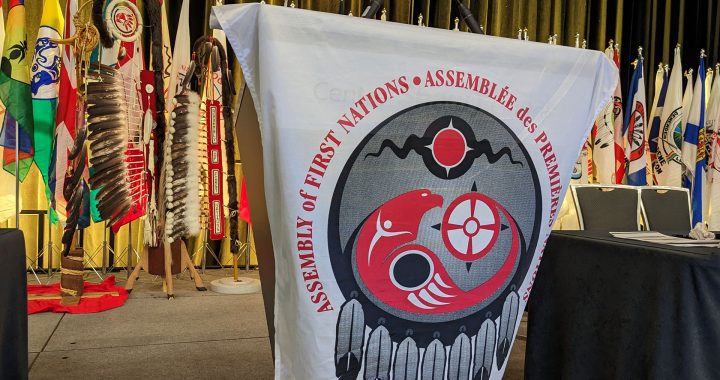

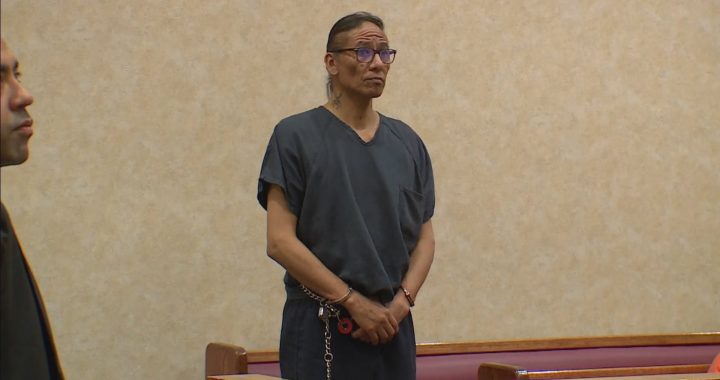
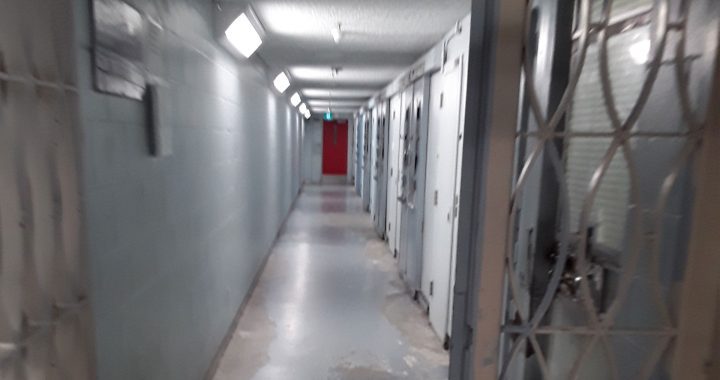

This kind of investigative reporting is what makes APTN noteworthy: